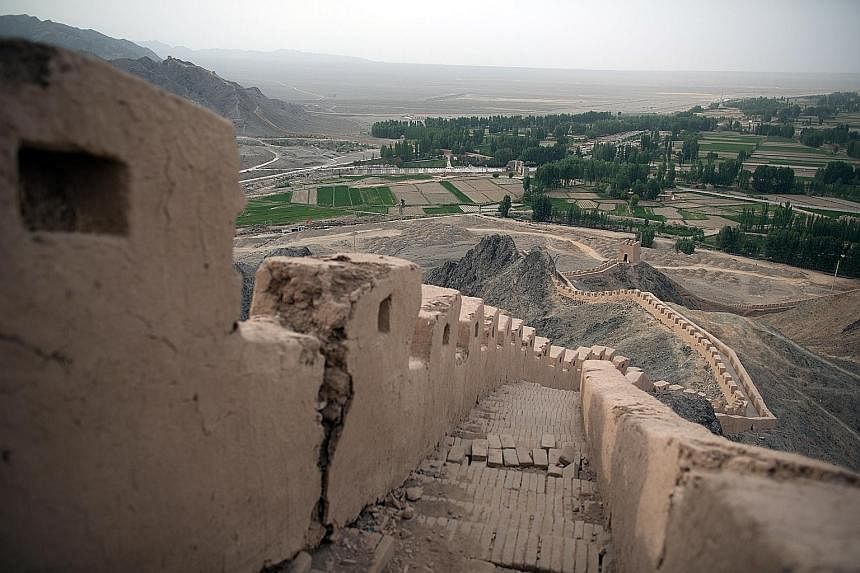BEIJING - About 30 per cent of China's Ming-era Great Wall has disappeared over time as adverse natural conditions and reckless human activities - including stealing the bricks to build houses - erode the Unesco World Heritage site, state media reported.
The Great Wall is not a single unbroken structure, but stretches for thousands of kilometres in sections, from Shanhaiguan on the east coast to Jiayuguanin the Gobi Desert.
It is so dilapidated in places that estimates of its total length vary from 9,000km to 21,000km, depending on whether missing sections are included. Despite its length it is not, as is sometimes claimed, visible from space.
Nearly 6,300km of the Great Wall was built in the Ming dynasty of 1368-1644, including the much-visited sectors north of the Beijing. Of that, 1,962km has eroded over the centuries, the Beijing Times reported.
Some of the construction weathered away and plants growing in the walls have accelerated the decay, said the report on Sunday, citing a survey last year by the Great Wall of China Society.
"Even though some of the walls are built of bricks and stones, they cannot withstand the perennial exposure to wind and rain," the paper quoted Mr Dong Yaohui, a vice-president of the society, as saying.
"Many towers are becoming increasingly shaky and may collapse in a single rain storm in summer."
Tourism and local residents' activities are also damaging the longest human construction in the world, the paper added.
Poor villagers in Lulong county in the northern province of Hebei used to knock thick bricks from a section of wall in their village to build homes, and slabs engraved with Chinese characters were sold for 30 yuan (S$6.50) each by local residents, it said.
Under Chinese regulations, people who take bricks from the Great Wall can be fined up to 5,000 yuan, the state-run Global Times said yesterday.
"But there is no specific organisation to enforce the rules. Damage could be reported only to higher authorities and it is hard to solve when it happens on the border of two provinces," said Mr Jia Hailin, a cultural relics protection official in Hebei, according to the report.
The report added that explorations of undeveloped parts of the Great Wall - an increasingly popular leisure activity in recent years - had brought those sections more tourists than they could handle, damaging them severely.
"We should not rely solely on local cultural relic departments to protect our national heritage," Mr Dong said. "More investment, central and local governments should bring in private capital and encourage local people to get involved."
AGENCE FRANCE-PRESSE, XINHUA

